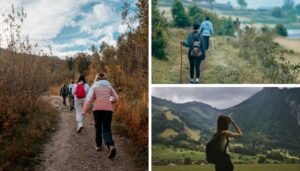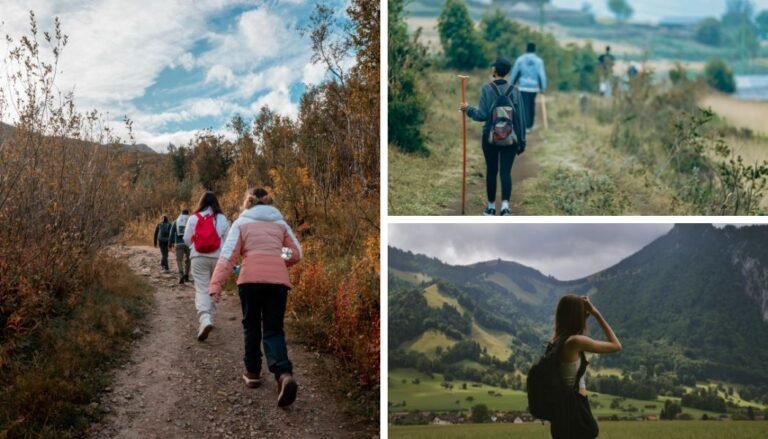Preparing for a Day Hike Matters More Than You Think
Did you know that hiking can burn over 400 calories an hour while boosting your mood and reducing stress? That’s just one of the many reasons why more people are hitting the trails. But if you’re a beginner, heading out on your first day hike can feel overwhelming. What do you bring? What type of backpack? How do you stay safe? And how do you make sure you actually enjoy the experience?
I’ve been in your shoes, and trust me, it’s easier than it looks. With a little preparation and a handful of practical tips, you can make your day hike not only safe but also incredibly rewarding. In this guide, I’ll share 11 essential tips every beginner should know before lacing up their boots and heading outdoors.
Choose the Right Trail for Your Skill Level
When I first got into day hiking, I had this bad habit of overestimating my abilities. A “moderate” trail description sounded harmless enough, but halfway up a 5-mile loop with a steep incline, I was sucking wind and wishing I’d stayed home. That hike taught me real quick that trail selection makes or breaks your day. You don’t want to be the one crawling back to the car while everyone else is enjoying the views.
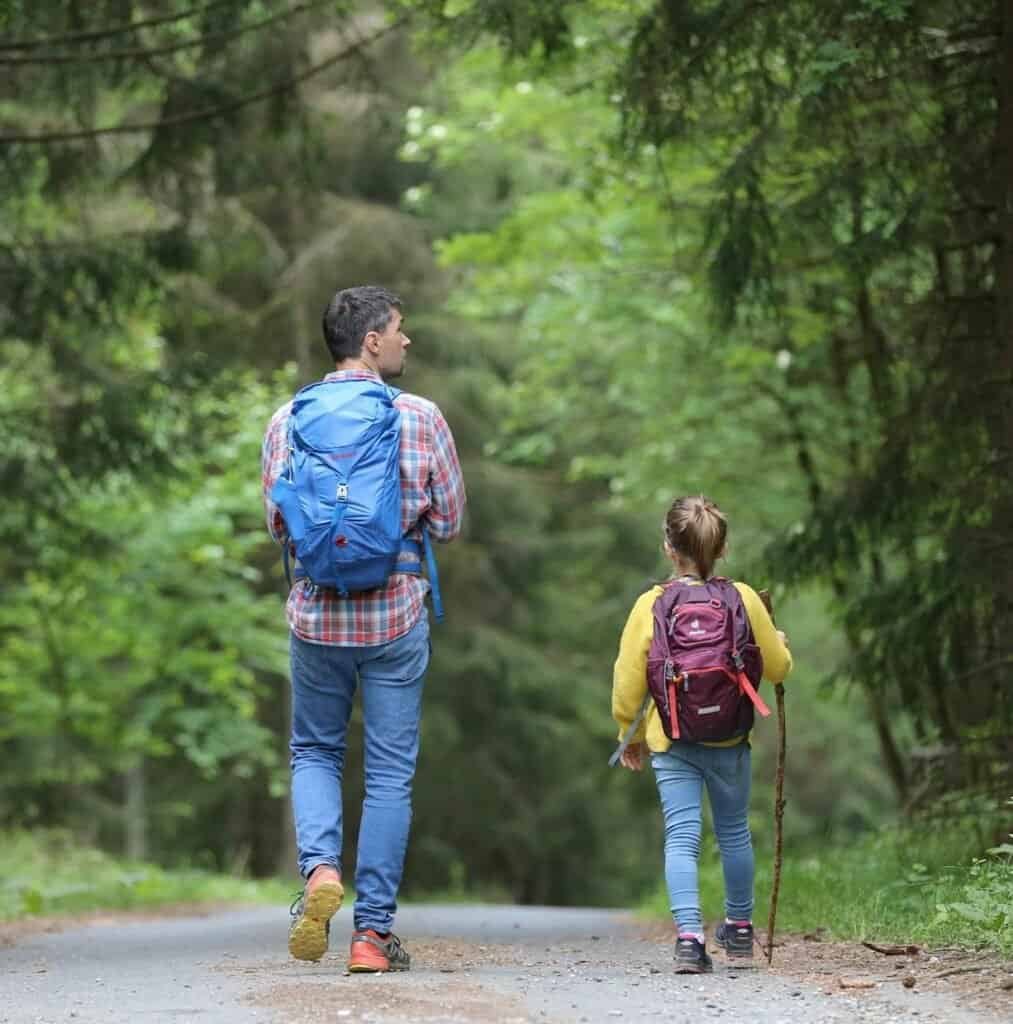
Start with beginner-friendly hiking trails
Beginner trails are the sweet spot for building confidence. Think 2–3 mile loops, minimal elevation, and well-marked paths. I used to think easy trails meant boring, but honestly, some of the prettiest spots I’ve found, like little hidden waterfalls or wide-open meadows, came from “easy” listings. If you’re brand new to day hikes, these trails let you focus on enjoying the scenery instead of stressing over how much energy you’ve got left in the tank.
Use apps like AllTrails to check distance, elevation gain, and reviews
AllTrails has saved me from plenty of disasters. For day hikes, I always check the total mileage first, because four miles might sound easy until you see the 1,000 feet of elevation gain hiding in there. Reviews are gold too; other hikers will tell you if a trail is washed out, overgrown, or buzzing with mosquitoes. One time, I skipped a planned hike after reading reviews about knee-deep mud from a recent storm. Instead, I picked a dry nearby loop and ended up having a way better time.
Understand trail difficulty ratings (easy, moderate, difficult)
Trail ratings can be sneaky. “Easy” usually means flat and short, “moderate” adds in some hills or distance, and “difficult” is where you’re climbing for views. But here’s the catch: what counts as moderate in one region might feel like difficult somewhere else. I learned that the hard way on a “moderate” hike in Colorado that felt way tougher than the “difficult” ones I’d done back home. My tip? Don’t just trust the label, dig into the details on mileage and elevation gain.
Pick trails that match your fitness level to avoid burnout
Burnout happens faster than you’d think, especially on a day hike where you didn’t plan to push too hard. I once dragged a buddy onto a 7-mile loop that was beyond what she was ready for, and by mile five, we were both miserable. Now, I match the hike to my energy for the day. If I want an easy morning, I’ll pick a short scenic loop. If I’m feeling strong, maybe I’ll tackle a trail with a steeper climb. The key is choosing something that feels challenging but still enjoyable; you want to end the hike smiling, not limping.
Wear Proper Hiking Footwear
When I first started going on day hikes, I figured my everyday sneakers would be fine. I mean, how bad could a couple of miles on a dirt path be? Well, after one short hike left me with sore arches, wet socks, and a rolled ankle, I learned the hard way that footwear is the one place you don’t want to cut corners, even if you’re just out for the morning.
Importance of sturdy hiking shoes or boots
For a day hike, sturdy hiking boots or light boots make a world of difference. They’ve got tougher soles that grip rocks, dirt, and roots, so you’re not slipping every few steps. Plus, they support your feet and ankles in ways that regular shoes just can’t. On one local trail with steep switchbacks, I remember feeling way more confident once I switched to mid-cut hiking boots. I could enjoy the views instead of staring at the ground, worried I’d trip.
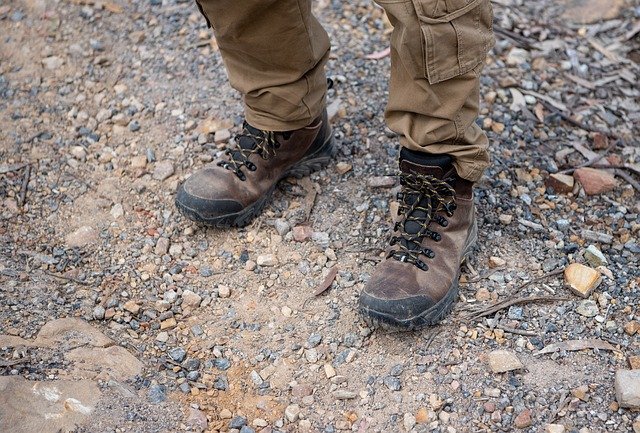
Why sneakers may not provide enough support
Sneakers are fine for paved walking paths, but once you step onto uneven terrain, they show their weaknesses fast. I wore running shoes on a 3-mile loop with loose gravel, and by the halfway point, my toes felt like they were being stabbed with every step. The thin soles gave me zero protection. Even worse, sneakers don’t hug your foot well on side slopes, so my ankles were wobbling the whole time. For day hikes, trail-specific shoes give you the balance and durability you’ll be thankful for.
Consider waterproof or breathable options
This part depends a lot on the conditions where you hike. If your local trails are muddy in spring or cross small creeks, waterproof shoes are a lifesaver. They’ve saved me from soggy socks more times than I can count. But for summer day hikes, I prefer breathable mesh shoes, they let my feet stay cooler and dry faster if I do step in a puddle. My rule: check the forecast before you go, and pick the pair that matches the weather.
Break in shoes before your first hike
Even if you’re only going out for a 2-mile hike, don’t wear brand-new boots straight from the box. I made that mistake once, and by the end, I had blisters on both heels the size of quarters. Now, I break in new shoes by wearing them around the house, to the grocery store, or on short neighborhood walks. Once they feel like they’ve softened up and molded to my feet, that’s when they’re ready for the trail.
Dress in Layers
The first time I went on a fall day hike, I made the rookie mistake of wearing a heavy hoodie and calling it good. By the time I started climbing, I was sweating buckets. Then, as soon as I stopped for a snack at the overlook, the wind kicked in, and I was freezing. That’s when I finally understood why everyone talks about layering; it’s not just some fancy outdoor marketing trick. It really does make or break your comfort on the trail.
How layering keeps you comfortable in changing weather
The weather on a day hike can change faster than you’d think. A cool morning can turn into a warm afternoon, or a sunny day can suddenly cloud over. With layers, you can peel one off when you’re hot or add one back on when you’re chilly. I love the flexibility because it means I’m not stuck shivering in a T-shirt or sweating under a thick jacket.
Base layer: moisture-wicking fabric
If there’s one thing I wish I knew sooner, it’s to avoid cotton as a base layer. Cotton soaks up sweat and stays wet, which makes you cold the second you stop moving. Instead, I wear a synthetic or merino wool shirt that pulls moisture away from my skin. On one summer hike, my moisture-wicking tee kept me way more comfortable than the friend who wore a cotton tank and ended up sticky and miserable.
Mid-layer: insulation for warmth
The mid-layer is your temperature control. Fleece or a lightweight puffy jacket usually does the trick for a day hike. I keep a packable fleece in my daypack because it’s easy to toss on when the wind picks up. It doesn’t add much weight, but it’s saved me from more than a few chilly lunch breaks at the summit.
Outer layer: windproof or waterproof shell
This is the layer I used to skip, until I got caught in a sudden drizzle. A simple rain shell would’ve kept me dry, but instead I hiked back soaked to the bone. Now, I always pack a lightweight waterproof jacket, even if the forecast looks perfect. For windy ridges, that same shell doubles as a windbreaker, keeping me warm without needing another heavy layer.
Pack the Eleven Essentials
I used to laugh at the idea of carrying “essentials” on a short day hike. Like, why would I need a fire starter or emergency shelter if I was only going to be out for four hours? Then one hike went sideways, a wrong turn added three extra miles, the clouds rolled in, and I realized just how unprepared I was. That little scare turned me into a believer. Packing the Eleven Essentials isn’t about being paranoid; it’s about being ready for the unexpected.
Map and compass (or GPS)
Even if you’re using an app like AllTrails, I always keep a paper map tucked in my pack. Phones die, signals drop, and batteries don’t care if you’re lost. Once, I had to backtrack nearly an hour because my phone’s GPS froze, and the map saved me from going in circles.
Sun protection (hat, sunscreen, sunglasses)
A cloudy day can still fry you. I learned that after a spring hike, where I came back with raccoon-eye tan lines from forgetting sunglasses. A lightweight hat and a small tube of sunscreen live in my bag now, no excuses.
Rain gear
Even on a “0% chance of rain” forecast, I’ve been caught in surprise showers. A packable rain jacket is a lifesaver, and it doubles as a windbreaker. Nothing ruins a day hike faster than soggy clothes.
Extra clothing
I don’t mean a full wardrobe, just something like a dry base layer or fleece. Once, my shirt was soaked with sweat after a steep climb, and slipping into a dry layer at the top felt like luxury.
First-aid supplies
Blisters are the most common issue I run into. A couple of bandages, moleskin, and ibuprofen go a long way. I tossed in tweezers, too, after pulling a nasty splinter out mid-hike.
Headlamp or flashlight
You’d think a day hike wouldn’t need one, but sunsets sneak up fast. I once misjudged a loop trail and ended the last mile in the dark, relying on my phone flashlight. Never again; now I carry a tiny headlamp that weighs next to nothing.
Food and snacks
Even for short hikes, I overpack snacks. Trail mix, granola bars, jerky, protein bars, because nothing kills morale like getting “hungry” halfway through. Extra calories help if the hike runs longer than planned.
Water and purification tablets/filter
Dehydration sneaks up quicker than you think. I carry a liter or two, depending on distance, plus a small filter straw just in case. Once, I ran out of water on a hot day, and finding a stream felt like striking gold.
Fire starter
I’ve never had to use mine on a day hike, but it’s there for peace of mind. A waterproof lighter or even stormproof matches weigh practically nothing.
Repair kit and multi-tool
My trekking pole tip once popped off mid-hike, and a little duct tape kept it usable. A multi-tool also saved me when my friend’s pack buckle broke; we rigged it enough to finish the loop. I also carry a good knife. They are worth their weight in gold in an emergency.
Emergency shelter
This sounds overkill for a day trip, but I carry an ultralight emergency bivy. It packs smaller than a soda can, and knowing I have a backup if I ever get stuck overnight, it makes me feel a lot more confident.
Nice to have: Trekking poles, especially if you’re going uphill in uneven terrain
Stay Hydrated and Bring Enough Water
Nothing ruins a day hike faster than running out of water. I learned this the hard way on a hot July afternoon when I miscalculated and only packed one small bottle. By mile three, my head was pounding, my mouth felt like sandpaper, and I was praying for a shady spot. Ever since then, water is the very first thing I plan before stepping on the trail.
Rule of thumb: half a liter per hour of moderate activity
A good baseline is about half a liter of water per hour of hiking. Of course, this depends on weather and trail difficulty, but it’s a solid starting point. On a two-hour hike in mild weather, a single liter usually does the trick, but if it’s hot or the trail climbs steeply, I’ll bump it up. I’d much rather carry extra weight than risk dehydration.
Use hydration packs or reusable bottles
Personally, I love hydration packs because sipping while I walk keeps me drinking consistently. With bottles, I sometimes forget until I’m already thirsty. That said, reusable bottles are easier to clean and great for shorter hikes. I’ve used both, and frankly, it just comes down to preference. On quick 3-mile loops, I’ll toss a bottle in my pack, but on anything longer, the hydration pack wins.
Consider water filtration if the trail has streams
On longer day hikes, I always check if the trail has natural water sources. Carrying a small filter straw, a filtered water bottle, or purification tablets has saved me a few times. Once, I underestimated how much I’d drink and ran dry halfway through. Thankfully, a clear stream was nearby, and my filtered water bottle turned what could’ve been a miserable slog into a refreshing refill.
Signs of dehydration to watch for
The scary part about dehydration is that it sneaks up slowly. Dry mouth, dizziness, and headaches are early signs I’ve ignored before, big mistake. By the time fatigue kicks in, you’re already behind on fluids. Now, if I notice I’m not sweating as much or my lips feel dry, that’s my cue to stop and sip before things get worse.
Pack Lightweight, Nutritious Snacks
I’ll admit, I used to be that hiker who tossed a random sandwich in a Ziplock bag and called it good. The problem? Halfway through the hike, it was smashed flat in my pack, soggy from condensation, and totally unappetizing. After a few frustrating snack fails, I finally figured out the art of packing food that actually fuels me without turning into trail mush. Snacks aren’t just about filling your stomach; they keep your energy up so you can actually enjoy the hike instead of dragging your feet.
Examples: trail mix, energy bars, jerky, fruit
Trail mix is hands-down my favorite. I’ll make my own with almonds, cashews, dried cranberries, and a little chocolate for a boost. Energy bars are great too, Clif, KIND, or even homemade oat bars, because they hold up well in a backpack. Jerky is another go-to; it’s lightweight, packed with protein, and doesn’t spoil. For something refreshing, I’ll bring apple slices or dried mango. Fresh fruit, like apples and oranges, can handle being tossed in a bag way better than bananas (learned that the messy way).
Why high-protein and high-carb snacks matter
When you’re hiking, your body burns through energy faster than you realize. Carbs give you that quick fuel to keep your legs moving, while protein helps sustain energy and keeps you from crashing. On one longer day hike, I only packed granola bars and found myself fading hard toward the end. Now I make sure I’ve got a mix, something carb-heavy for quick energy (like dried fruit or crackers) and something protein-rich (jerky or nut butter packets) for the long haul.
Avoid heavy, bulky food items
One rookie mistake I made was packing a giant sub sandwich for a “short” hike. Not only was it heavy, but after carrying it for hours, I didn’t even feel like eating it. Heavy foods weigh you down, and bulky items take up precious pack space. Stick with snacks that are lightweight, compact, and calorie-dense. Think: one energy bar at 250 calories instead of a clunky sandwich that’s half bread and doesn’t pack well.
Start Early and Plan Your Time Wisely
When I first got into day hiking, I had a bad habit of rolling up to the trailhead around noon. I figured, “It’s just a few miles, what’s the rush?” But those late starts almost always backfired. Crowded parking lots, hotter temps, and racing the sun on the way back aren’t exactly relaxing. Once I finally started heading out in the morning, the whole experience shifted. I had more energy, better views, and way less stress.
Benefits of hitting the trail in the morning
Morning hikes are magic. The air feels cooler, the light is softer, and wildlife is way more active. I once caught a family of deer grazing near the trail just because I started before most people were even awake. On top of that, trailheads are usually less busy early on, which means I get parking and some peace and quiet before the crowds show up.
Allow extra time for breaks and photo stops
I used to underestimate how long a “quick hike” would take because I didn’t factor in breaks. But let’s be real, stopping for snacks, water, or photos is half the fun. On a three-mile loop, I might plan for an hour and a half, even though it technically could take less. Building in that buffer means I’m never rushing and can actually enjoy the trail without checking my watch every five minutes.
Aim to finish before sunset
This one I learned the hard way. On one hike, I underestimated the time and ended up doing the last mile in the dark, using my phone flashlight to see the trail. It was sketchy and stressful, and I promised myself never again. Now, I always aim to be back at the trailhead at least an hour before sunset. Even if I linger too long at the summit, I still have daylight to spare.
Learn Basic Trail Etiquette
When I first started hiking, I didn’t realize there were unspoken rules that kept the trails safe and enjoyable for everyone. After a few awkward encounters, like accidentally blocking the path or someone blasting their music too loudly, I quickly picked up on the importance of trail etiquette. It’s not just about being polite; it’s about creating a respectful, cooperative space where everyone can enjoy nature.
Yielding rules: uphill hikers have the right of way
This was one of the first things I learned. If I’m going downhill, it’s easier for me to stop and step aside than it is for someone grinding their way up. Uphill hikers are working harder, so giving them the right of way is just common courtesy.
Step aside for faster hikers
Even on a single-track trail, it’s easy to let someone pass. If I hear footsteps behind me, I move over when there’s a safe spot. I’d rather let someone cruise past than feel like I’m slowing them down or breaking my own rhythm trying to speed up.
Keep noise levels down to respect nature
At first, I thought blasting a playlist would make hikes more fun, but then I realized how much it drowned out the sounds of birds, streams, and wind in the trees. Now, I either hike in silence or keep my earbuds in at a low volume. A quiet trail also means less disturbance for wildlife, and more chances to actually see them.
Say hello, it builds a friendly hiking community
One of the things I love about hiking is how friendly people are on the trail. A simple “hello” or a nod goes a long way in creating a welcoming vibe. Sometimes it even sparks a quick conversation about trail conditions or wildlife sightings, which makes the whole experience feel more connected.
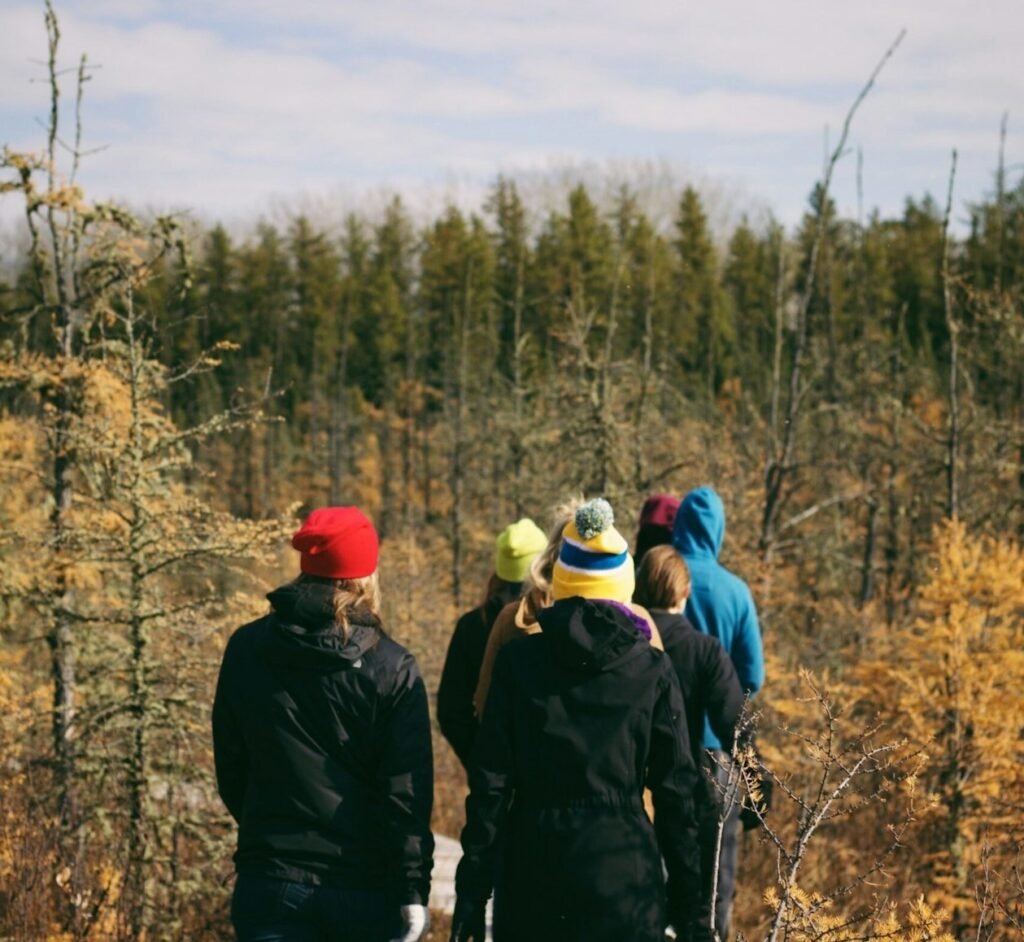
Respect Wildlife and Nature
One of the biggest reasons I go hiking is to experience the outdoors as it is: wild, quiet, and untouched. That means I have a responsibility to keep it that way for the next person and for the animals who actually live there. Respecting wildlife and nature isn’t just about being a “good hiker”; it’s about protecting fragile ecosystems that can take decades to recover from even small disruptions.
Do not feed animals
It’s tempting to toss a chip to a squirrel or leave crumbs for birds, but feeding wildlife changes their natural behavior. Animals can become dependent on people for food, lose their foraging instincts, and even become aggressive. I’ve seen chipmunks run right up to hikers because they’ve been fed too many times, and that’s not safe for them or us.

Observe from a safe distance
I love spotting deer, birds, or even the occasional fox on the trail, but I always remind myself to keep my distance. Approaching wildlife can stress them out, disrupt their routines, and sometimes put me in danger. A zoom lens or binoculars lets me enjoy the view without disturbing their space.
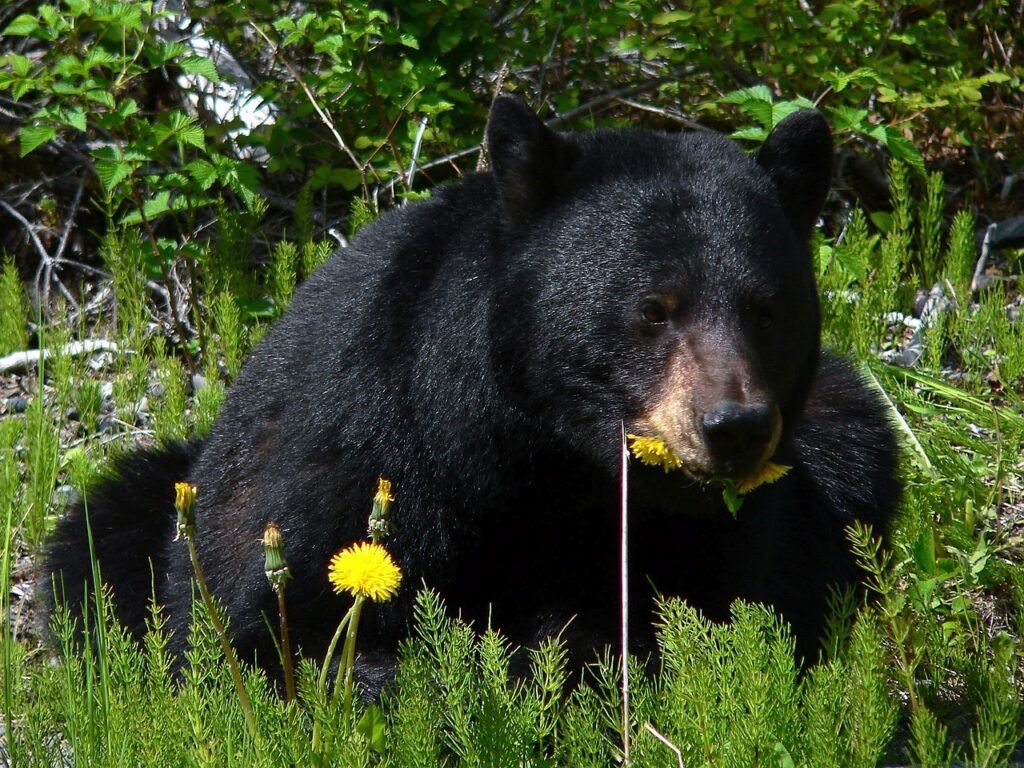
Stick to marked trails to protect ecosystems
I used to think cutting across a patch of grass or creating a shortcut wasn’t a big deal, but off-trail wandering can destroy plants, erode soil, and damage habitats. Staying on marked trails keeps me safe from getting lost while also preserving the environment for future hikers.
Follow Leave No Trace principles
This all ties into the Leave No Trace mindset: pack out what you pack in, don’t pick flowers, minimize campfire impacts, and leave nature as I found it. I see it as hiking with respect, so when I step off the trail at the end of the day, there’s no evidence I was even there.
Know Your Limits and Listen to Your Body
One of the biggest lessons I’ve learned on day hikes is that pushing too hard takes the fun right out of the experience. Hiking is supposed to be refreshing, not punishing, and ignoring my body’s signals almost always leads to regret later. By knowing my limits and paying attention to how I feel along the way, I’ve managed to enjoy hikes without ending up sore, frustrated, or injured.
Recognize signs of fatigue or overexertion
It’s easy to get caught up in the excitement of reaching a summit or pushing for that extra viewpoint, but my body usually lets me know when it’s time to ease up. Heavy breathing that doesn’t calm down, wobbly legs, dizziness, or feeling overheated are all red flags. When those signs show up, I slow down, sip some water, and take a breather.
It’s okay to turn back if needed
This one took me a while to accept. I used to feel like turning back was “quitting,” but really, it’s just smart hiking. Trails will always be there another day, and it’s better to head back early than risk exhaustion or injury. Some of my most enjoyable hikes ended before the “official” destination, and I still came home feeling accomplished.
Stretch before and after to avoid soreness
A quick stretch before hitting the trail makes a big difference, especially for my legs, hips, and lower back. After a hike, I take a few minutes to loosen up again so I’m not stiff the next morning. It’s a simple habit that keeps my body feeling good enough to plan the next adventure without downtime.
Hiking is about enjoyment, not competition
I remind myself often that hiking isn’t a race. It’s not about how fast I finish or how many miles I cover; it’s about enjoying the journey. Some days I move quickly; other days I stop every five minutes to snap photos or soak in the views. Both are valid, and both leave me with memories that make the trail worth it.
Be Prepared for Emergencies
I’ll be honest, this is the part I used to shrug off when I first started day hiking. I thought, “It’s just a couple of hours, what could go wrong?” Then I got caught in a sudden storm once, with no signal on my phone, and that experience completely changed how I pack and plan. Emergencies on the trail don’t have to mean life-or-death situations; they can be as simple as a twisted ankle, a wrong turn, or a weather surprise. But being prepared makes those stressful moments so much easier to handle.
Carry a whistle and a small first aid kit
A whistle might seem unnecessary, but it’s one of the lightest tools that can get you heard if you’re in trouble. I keep mine clipped to my backpack strap where I can grab it fast. As for a first aid kit, I used to pack way too much, then realized a small kit with bandages, antiseptic wipes, blister pads, and pain relievers covers most of what I’d ever need on a day hike.
Let someone know your hiking plans
This one has become a non-negotiable for me. I always text a friend or family member with my trail name, expected start time, and when I plan to be back. Even if nothing goes wrong, that peace of mind feels huge. Once, I lost track of time and got back hours later than planned, and because I had told someone, they didn’t panic; they knew my general location. You should leave a trip information sheet visible in your vehicle in case emergency personnel need to access it in the event of an accident or other emergency.
Phones die, batteries drain fast in the cold, and sometimes there’s just no reception. I once relied too heavily on my phone for directions and ended up walking an extra mile because the app froze. Now I always bring a printed map of the trail and a simple compass. I’m not an expert navigator by any means, but even knowing how to orient myself to the trailhead has saved me from a ton of stress.
Understand how to use emergency contacts or apps
Some phones have built-in SOS features, but they only help if you’ve set them up ahead of time and you have cell coverage. I took a few minutes to add my emergency contacts and test it out, so I’m not fumbling if I actually need it. When I’m hiking solo, I carry an emergency location beacon (PLB).
Enjoy Your First Day Hike with Confidence
Hiking doesn’t have to be intimidating. By choosing the right trail, packing smart, and respecting both nature and your limits, you can make your first day hike an unforgettable experience. These 11 essential tips will not only keep you safe but also maximize your enjoyment on the trail.
So, lace up your boots, grab your gear, and take that first step toward adventure. You’ll be hooked on hiking in no time.
FAQ Section
How long should a beginner’s day hike be?
For beginners, aim for a hike between 2 to 5 miles with minimal elevation gain. This allows you to enjoy the trail without overexerting yourself while still building confidence and endurance.
Do I need hiking boots, or can I use regular sneakers?
While sneakers may work for very short and easy trails, hiking shoes or boots are recommended. They provide better ankle support, grip, and protection against rocks, mud, or slippery terrain.
How much water should I bring on a day hike?
The general rule is about half a liter per hour of hiking in moderate conditions. Always carry extra, especially in hot weather, and consider bringing a small water filter or purification tablets if natural water sources are available on your trail.
What should I eat before and during a day hike?
Eat a balanced meal with carbs and protein before your hike. During the hike, bring lightweight snacks like trail mix, granola bars, jerky, or fruit to keep your energy levels stable.
Is it safe to hike alone as a beginner?
Hiking alone as a beginner can be riskier. It’s best to start with a friend or group until you’re more experienced. If you must hike solo, choose well-traveled trails, inform someone of your plans, and carry essential safety gear.
Disclaimer: This blog post contains affiliate links

